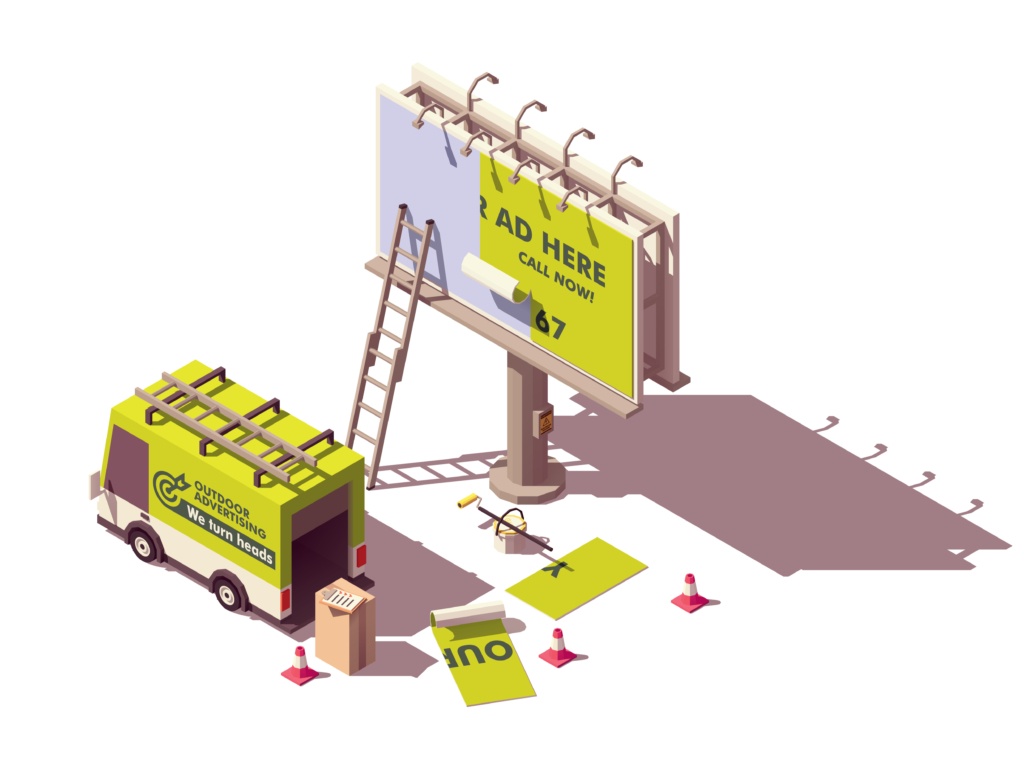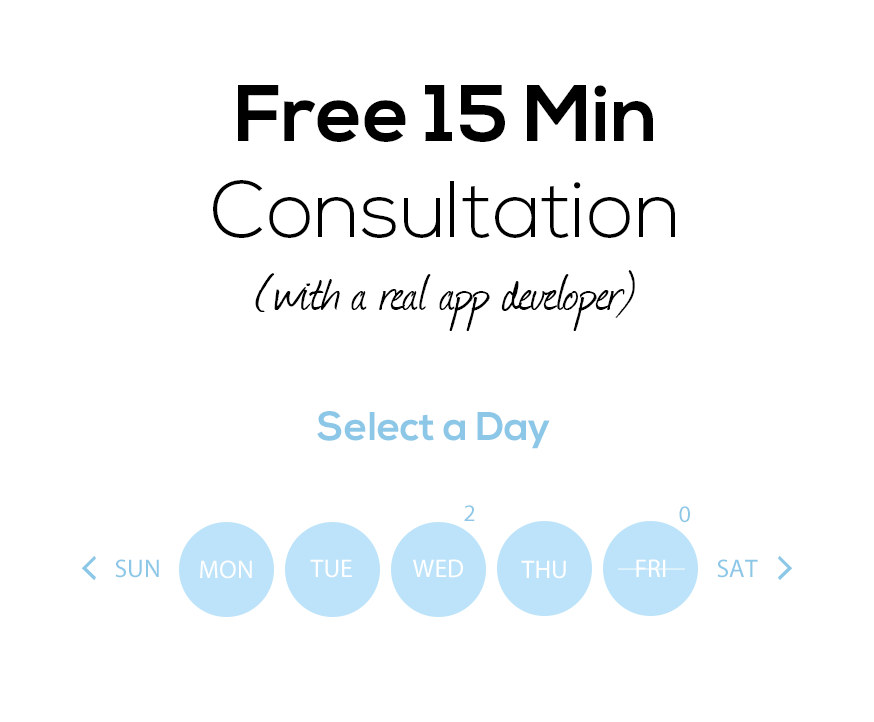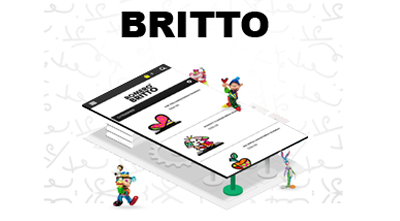Updated
10 min read
How to Successfully Pitch an App Idea – What to Know

While you may have a great idea for your next mobile app, it doesn’t mean much until you learn how to properly pitch that idea.
After all, who’s going to fund your project? That’s right – investors.
If you aren’t able to articulate exactly what problems your app will solve, how it will bring value to users, and most important of all, how it will generate money, good luck finding anyone to fund your startup.
Not only will learning how to pitch your app idea come in handy when it’s time to approach investors, but it’s also important for when you’re getting ready to pitch your app to the world.
Let’s dive in!

Step #1: Define How Your App Solves Problems
Understanding what problems your app solves is the cornerstone of a successful mobile app.
If your app isn’t really solving anything, then why does it need to exist?
You’re probably here reading this article because you already have an idea of what problems your app could potentially solve, and that’s great!
But if you want to really prop up your app to make it appealing to investors, give yourself more time to ask yourself questions and flesh out how your app will be useful to users.
So how do you do that?
1.1 Identify your Target Group
Take time to carefully analyze who your target audience is. This is an important first step to understanding what solutions your app can bring.
Here are a few demographics that will help you identify your audience:
- Age
- Gender
- Occupation
- Location
- Marital Status
- Education
- And so on
Don’t just say, “it’s an app for young people”. That’s way too vague and won’t help you.
How young are they?
Are these Android users or iOS users?
Are these affluent young people?
Getting as specific as you can when identifying your target group is key.
1.2 Ask Questions
Once you can really identify your target audience, get out there and ask them questions.
You can do this with your friends and family or even on social media.
Find people who relate to your app and learn about what their concerns are and what problems currently exist in your app’s niche.
Find out what matters to them most when using apps like yours.
PRO TIP:
Listening to people’s opinions can help you discover other problems you didn’t realize existed and new ways in which your app can solve them.
1.3 Analyze the problem
Now that you have a better idea of the current problems in your app’s niche, analyze them deeply.
Ask yourself:
- How bad are these problems?
- How often do they occur?
- What’s causing them?
- How are they affecting people?
- Has anyone else tried solving these problems?
Remember, this is about brainstorming where your app fits in the current market and how it can be useful to users.
1.4 What Problem Will You Solve?
If you try doing everything you’ll end up doing nothing.
Don’t attempt to solve every problem plaguing your app’s market. Focus on solving just one or two big problems.
Start brainstorming how your app solves a problem or how it can improve on existing solutions.
1.5 Know the Competition
You’re going to be checking out the competition every step of the way in your app development journey.
And that’s ok. Keep coming back to see how the competition is doing various things.
How are they designing their app?
How are they marketing their app?
What revenue models are they using?
And, in this case, what problems are they solving, or attempting to solve, and how can your app improve upon them?
Look at the competition and analyze how they are falling short on solving problems so you can avoid the same pitfalls.

Step #2: Determine if Your App is a Market Fit
Once you’re at the point of knowing what problem (or problems) your app will solve, you have to ensure there’s a market for that solution.
This is crucial for when it comes time to pitching your app idea to investors.
They’re going to want proof that your app idea and solutions will resonate with your users, so have the data ready when you’re preparing your pitch.
You’ll want information on the following:
- How big the market is
- The growth of the market in the past several years
- The number of potential users/customers you can reach with the marketing campaigns you’ll put in place
- The projected revenue
- The projected cost to acquire a new user
- The number of potential users
Remember, you can’t just throw numbers around and expect people to be impressed.
Analyzing the market and where your app fits in is going to require time and research. While this kind of data is never 100%, it should be reasonable information so your investors can determine if they’ll be able to make a profit or not.
Step #3: Revenue Model
Showing investors where your app fits in the market is all well and good, but you’re going to need even more to really impress them.
How do you plan on monetizing your app?
What revenue model(s) will you use?
Remember, investors are only giving you the time of day because they want to make money.
So how do you make money on mobile apps?
3.1 Free vs Paid
It’s tempting to simply charge users to download your app. After all, it’s a pretty straightforward approach to making money.
Just keep in mind that 93.9% of apps in the App Store are free (97% for Android apps). There’s a reason for this.
Charging users to download your app is not easy. You have to convince potential users that your app is valuable and worth purchasing.
It requires a loyal user base.
Users are much more likely to download an app on a whim if it’s free. They don’t put as much thought into like they would if they were paying.
So take time to consider which model will best serve your app.
3.2 How Free Apps Make Money
Let’s review a few ways free apps make money, and remember, many successful apps will use one or several of these methods.
Advertisements
This is a popular monetization method and comes in various forms.
There are banner ads, video ads, and pop-up ads.
It’s also a simple method. You feature ads in your app and a third-party pays you every time a user clicks on an ad or every time an ad is viewed or displayed.
In-App Purchases
With advertisements, the idea is that a user will click on an ad and be taken to another page or app where they’ll hopefully make a purchase.
With in-app purchases, the user makes the purchase right there within your app. It’s something you’re selling them, like points, coins or other digital currencies, upgrades, or extra features.
Many apps will offer a basic service for free but users have the option to unlock extra features by paying for it.
Subscriptions
Some apps earn revenue through a subscription model, which is popular for newspapers and other publishers.
They can offer users a free app to download, but also a paid subscription to receive more content.

Step #4: Make a Prototype
Surely you’ve heard the phrase—a picture is worth a thousand words.
You don’t necessarily need a prototype of your app when pitching your idea, but it sure helps.
Having some form of prototype, whether it’s low-fidelity or high-fidelity, is a great way to not only demonstrate your commitment to your app idea, but also to help people understand how your app will look and work.
4.1 Low-Fidelity Prototypes
A low-fidelity prototype usually comes in the form of rough sketches or hand-drawn mockups.
They’re easy to create and serve as a visualization of an app’s design.
They’re not interactive. You can’t push any buttons or swipe through pages. They’re lo-fi.
Paper prototypes are cheap and easy to make. All you need is paper, scissors, and some sticky notes.
This allows you to get quick feedback on things like your site’s architecture, design elements, and other content.
PRO TIP:
Low-fidelity prototypes can help you gather feedback on your app in the very early stages of your app project.
4.2 High-Fidelity Prototypes
High-fidelity prototypes, on the other hand, are generally digital and require some software tool like Adobe XD or Sketch.
These prototypes are much more realistic and allow for user interaction with various elements and functionality within the app.
Basically, it gets you close to the real thing.
High-fidelity prototypes are best for collecting user performance data when conducting usability testing, like how long it takes for a user to complete a task.
If you have the time and resources, a high-fidelity prototype is ideal for demonstrating your app’s capabilities and design to investors.
Step #5: Prepare a Pitch Deck
So once you have a better idea of what your app does and how it will make money, the time has come to work on preparing a pitch deck, which can be used to win funding for your app.
Just keep in mind that how your pitch deck will look depends on what stage of funding you’re app is in, whether that’s pre-seed, seed, series A, and so on. A good rule of thumb when preparing your pitch deck is to include more content the farther along your app project is.
So if you’re just starting out and you don’t yet have a solid tech stack or road map prepared for your initial pre-seed funding, its OK to have less information about it in your pitch deck.
Here is what you should always consider including in your pitch deck:
- Introduction—Give a brief description of who you are and what you’re going to be pitching.
- Team—A quick glance at your team and their backgrounds (if you have one assembled yet)
- Problem—What problems are users currently facing? This will help highlight your solutions.
- Competition—Who are your competitors and how does your product differ?
- Product—Explain what your app does and how it works.
- Market—Provide data about the size of your target market, including past and projected growth.
- Revenue Model—Review how your app will generate money and what methods you will use.
- Investing—What is your estimated budget?
- Contact—Leave your contact information so they can reach you.

PRO TIP:
While having an A+ pitch deck will score you major points when presenting your app to people, you should also have an elevator pitch ready.
An elevator pitch is a super-condensed version of your pitch deck that you can deliver to someone in the time it takes to ride an elevator, hence its name. It’s a good idea to have one prepared because you never know when you’ll need it or who you’ll bump into.
Final Thoughts
When pitching your app idea to anyone, whether it’s curious family members, colleagues, or investors, the key is to be prepared.
Having a solid pitch deck will help others better understand your product, the problems it solves, and its potential to generate revenue so they want to get involved.
We make this incredibly easy with our Simple Starter package which includes detailed technical documentation for your app, wireframe sketches, and target user analysis so you’re equipped with what you need for not only your developers and designers but investors too.
Remember, investors want to feel confident in the projects they invest in, so don’t give them a half-baked idea.
Impress them with your carefully crafted pitch deck and a prototype of your app, and wait for the calls to come in.
1 Comment




Your inbox wants some love.
Stay informed with Webiotic latest










Thanks for the great information !